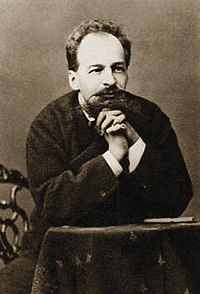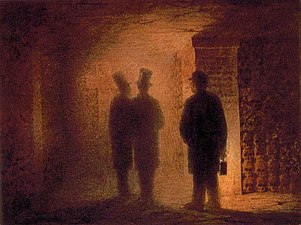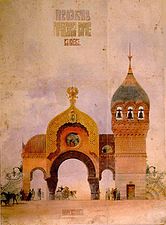Viktor Hartmann
- Machine translation, like DeepL or Google Translate, is a useful starting point for translations, but translators must revise errors as necessary and confirm that the translation is accurate, rather than simply copy-pasting machine-translated text into the English Wikipedia.
- Do not translate text that appears unreliable or low-quality. If possible, verify the text with references provided in the foreign-language article.
- You must provide copyright attribution in the edit summary accompanying your translation by providing an interlanguage link to the source of your translation. A model attribution edit summary is
Content in this edit is translated from the existing Russian Wikipedia article at [[:ru:Гартман, Виктор Александрович]]; see its history for attribution. - You may also add the template
{{Translated|ru|Гартман, Виктор Александрович}}to the talk page. - For more guidance, see Wikipedia:Translation.
Viktor Hartmann | |
|---|---|
| Виктор Александрович Гартман | |
 Viktor Hartmann | |
| Born | (1834-04-23)April 23, 1834 Saint Petersburg |
| Died | July 23, 1873(1873-07-23) (aged 39) Moscow Governorate |
| Education | Member Academy of Arts (1870) |
| Alma mater | Imperial Academy of Arts (1861) |
| Known for | Architecture, Painting |
| Awards |  |
Viktor Alexandrovich Hartmann (Russian: Ви́ктор Алекса́ндрович Га́ртман; 5 May 1834, Saint Petersburg – 4 August 1873, Kireyevo near Moscow) was a Russian architect and painter. He was associated with the Abramtsevo Colony, purchased and preserved beginning in 1870 by Savva Mamontov, and the Russian Revival.
Life
Victor-Edouard Hartmann was born in Saint Petersburg into a family of German ancestry. He was orphaned at a young age and grew up in the house of his mother's sister, L. Hemilian, and her husband Alexandre Hemilian, who was a well-known architect. He studied at the Academy of Fine Arts in Saint Petersburg and at first started working by illustrating books.
He also worked as an architect and sketched, among other things, the monument to the thousandth anniversary of Russia in Novgorod, which was inaugurated in 1862. He made most of his water colors and pencil drawings on journeys abroad in the years 1864 to 1868. Together with Ivan Ropet, Hartmann was one of the first artists to include traditional Russian motifs in his work.
In 1869 Hartmann entered a competition with his design for the Bogatyr Gate (The Great Gate of Kiev)[1][2] as a commemoration of a failed assassination attempt of the tsar of Russia, Alexander II.[3]
Since Vladimir Stasov had introduced him to the circle of Mily Balakirev in 1870, he had been a close friend of the composer Modest Mussorgsky. Following Hartmann's early death from an aneurysm at the age of only 39, an exhibition of over 400 of his paintings was displayed in the Academy of Fine Arts in Saint Petersburg, in February and March 1874. This inspired Mussorgsky to compose his suite Pictures at an Exhibition. Most of the works shown at the 1874 exhibition are now lost.[4]
Gallery
-
 Design for the Naval department of Russia's pavilion at the Vienna World Fair of 1873
Design for the Naval department of Russia's pavilion at the Vienna World Fair of 1873 -
 Sketch for the ballet Trilby
Sketch for the ballet Trilby -
 The Rich Jew
The Rich Jew -
 The Poor Jew
The Poor Jew -
 The Paris Catacombs
The Paris Catacombs -
 Plan for a City Gate in Kiev
Plan for a City Gate in Kiev -
 Extant Savva Mamontov printshop, Leontyevsky Lane, Moscow
Extant Savva Mamontov printshop, Leontyevsky Lane, Moscow
See also

References
- ^ Orchestra, Minneapolis Symphony (1950). The Minneapolis Symphony Orchestra.
- ^ Solovieva, Olga V. (2023). The Russian Kurosawa: Transnational Cinema, Or the Art of Speaking Differently. Oxford University Press. ISBN 978-0-19-286600-4.
- ^ Maes, Francis (2006-02-20). A History of Russian Music: From Kamarinskaya to Babi Yar. University of California Press. ISBN 978-0-520-24825-0.
- ^ Music (Firm), Discover Classical (2010). Discover Classical Music. Lulu.com. p. 279. ISBN 978-1-906392-37-6.
External links
- Eagen, Tim Images for Pictures at an Exhibition Reproductions and descriptions of Viktor Hartmann's pictures at stmoroky.com. January 2000; updated January 14, 2020
- (in Japanese) More reproductions of Viktor Hartmann's pictures



















